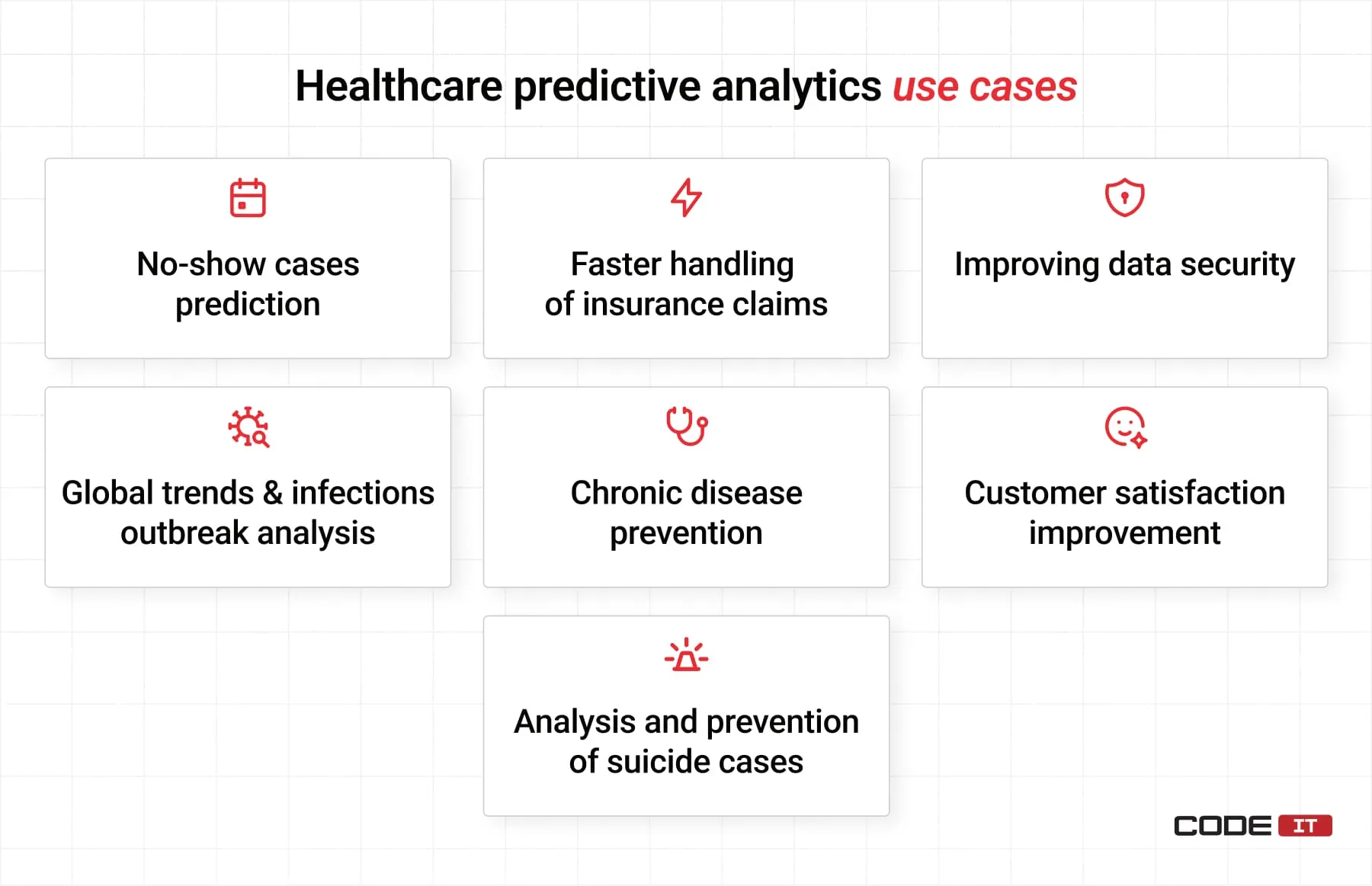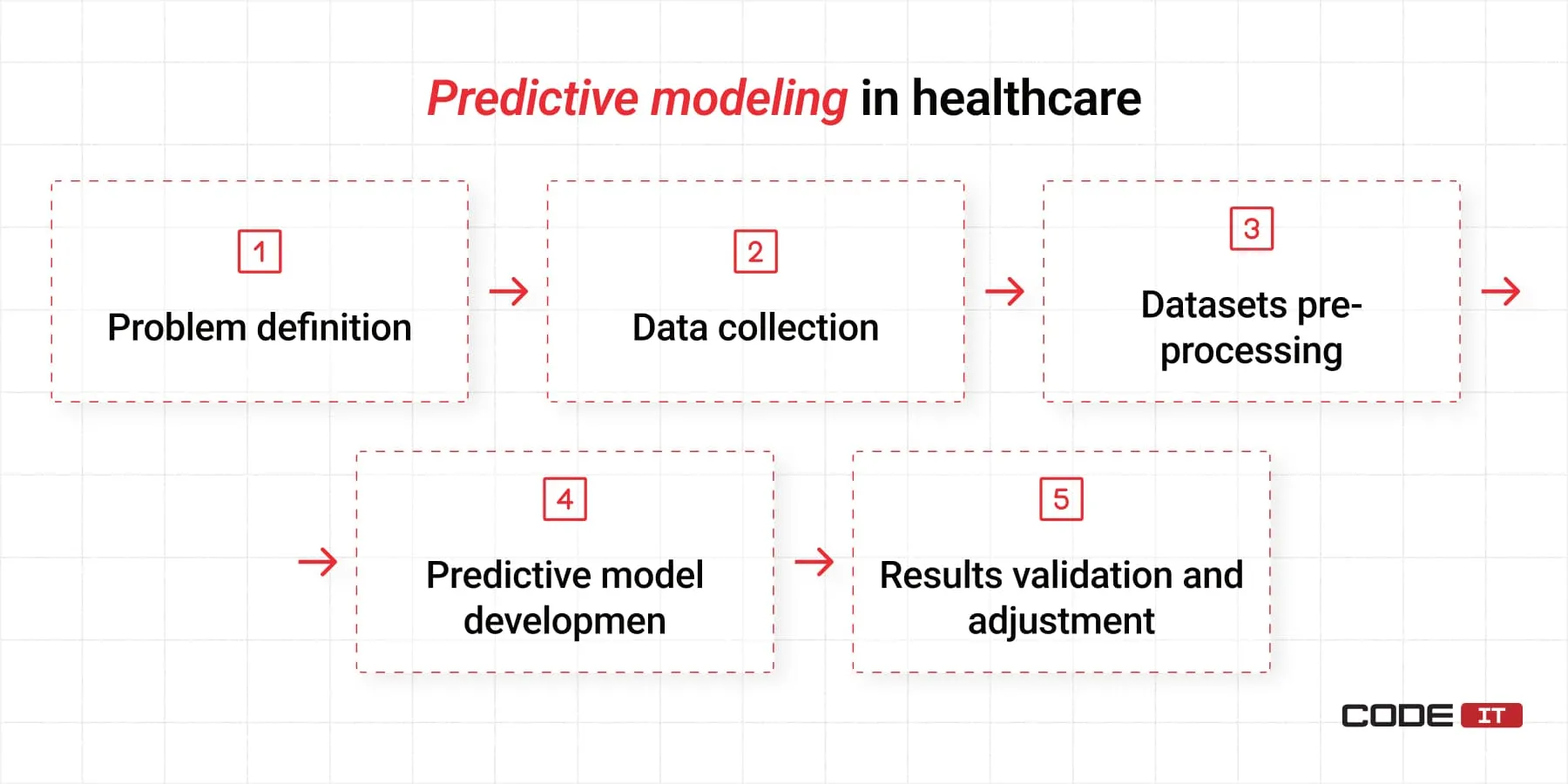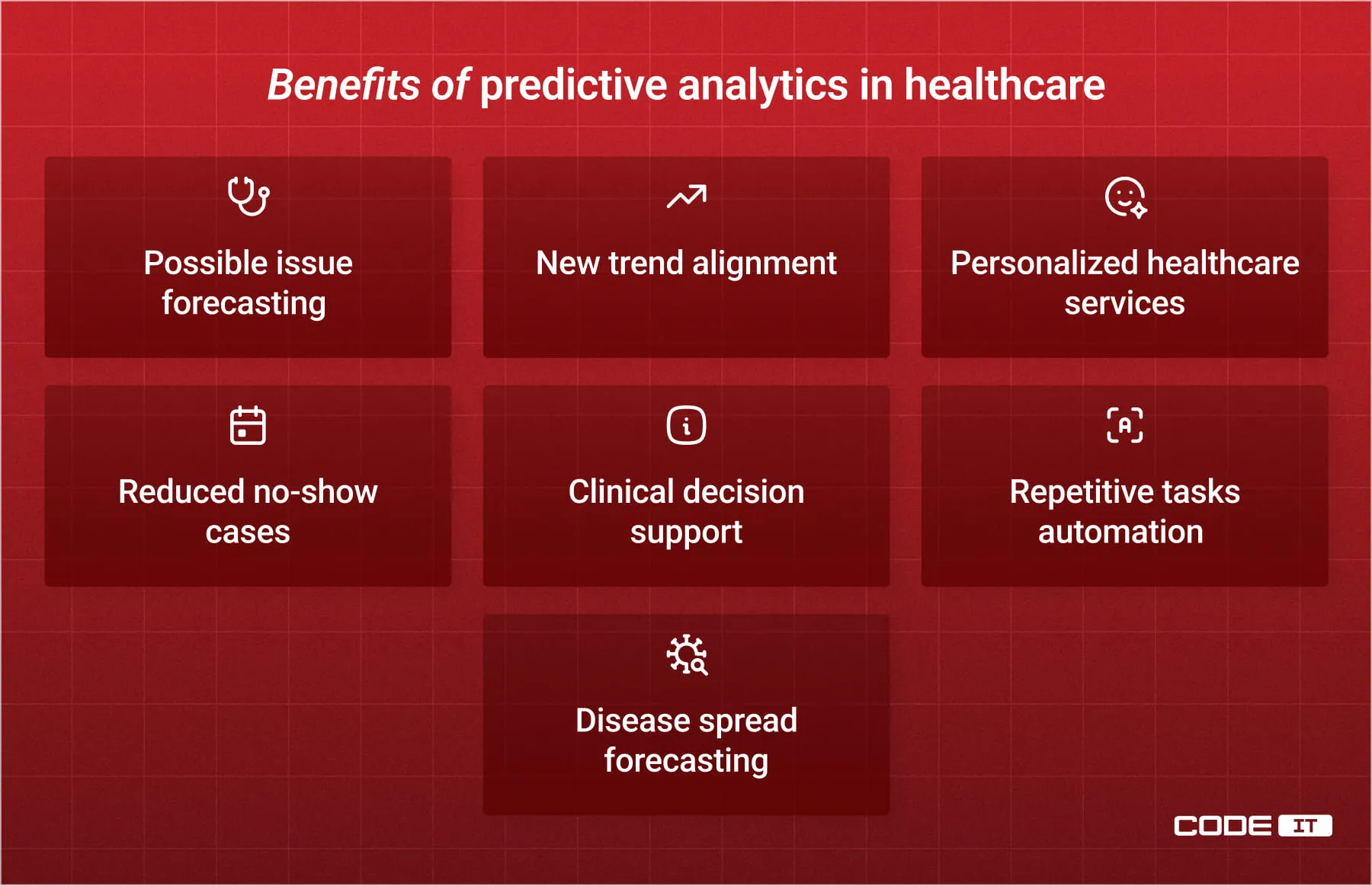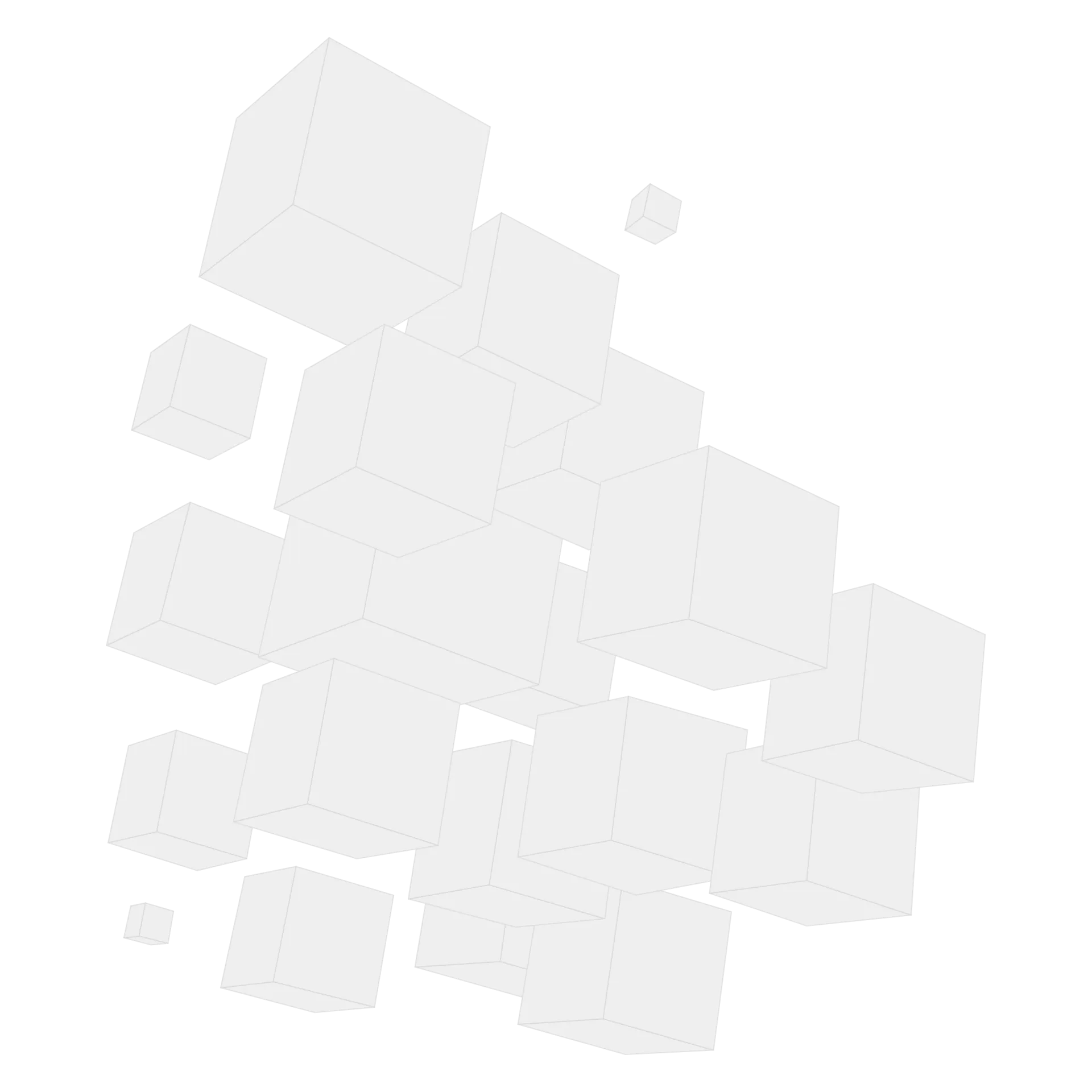Predictive Analytics in Healthcare: Use Cases, Benefits, and Challenges


Predictive analytics (PdA) unlocks the opportunity to predict future changes by analyzing historical data. Applying PdA in healthcare helps project future health changes, keeping healthcare professionals informed about expected treatment outcomes. Also, it can alert about the identification of severe health trends in patients’ health before negative changes occur.
Deep insights into patients’ behavior help healthcare providers better understand their activities, discovering how they can be improved to deliver exceptional services. In this article, we will explain how predictive analytics tools are used in the healthcare industry, the benefits they bring, the risks associated with their use, and what to expect in the near future.
PREDICTIVE ANALYTICS IN HEALTHCARE
Classical analytics involves analyzing known data and processes to identify patterns. In contrast, the predictive analytics approach, in turn, uses all available data to predict what will happen next.
Predictive analytics tools find the widest range of applications in the healthcare industry. We will talk about specific examples below, but for now, it must be said that there are no contradictions in this pattern. PdA in healthcare uses big data, data mining, AI and ML capabilities, and predictive analytics tools to analyze large arrays of patient medical data taken from various sources, including the following:
- electronic health record systems
- insurance proceedings
- patient records
- medical imaging
This is done to find out what diseases a particular patient is more prone to, how his body will respond to various types of treatment, whether he is inclined to skip regular visits to the doctor, and whether he should be expected to call for medical aid in the future. That is precisely why deep learning in healthcare is so important.
In general, the combination of such technological capabilities with all the knowledge about medicine, epidemics, and diseases that specialists have accumulated over the years allows doctors to better understand the interaction between external factors and the human body. Ultimately, it leads to a complete rethinking of healthcare as a whole and truly personalized treatment provision.
Enable predictive analytics in healthcare?

Business First
Code Next
Let’s talk
HEALTHCARE PREDICTIVE ANALYTICS USE CASES
Data-baked insights unlock many opportunities for healthcare providers to improve their operations. Let’s review some examples of predictive analytics in healthcare. We identified 7 main areas of greatest interest and perspective.

No-Show Cases Prediction
Let’s start with a seemingly insignificant factor, which nevertheless bears great losses for healthcare institutions.
Problem description:
It is worth distinguishing between situations when the patient informed the doctor about his refusal in advance (at least a couple of hours) and when this happens 30 minutes before the appointment.
In the first case, medical institutions are able to minimize administrative losses. Second, there is too little time left to save yourself from losses. In such a situation, if the patient simply does not appear at the appointment without any notification, medical institutions can suffer an average administrative loss of $200-300 for each no-show case.
PdA solution:
Within the framework of this problem, healthcare predictive analytics software is used to predict which patients are prone to not showing up for appointments. By studying patient risk factors and medical histories, such a predictive analytics tool will help prevent no-show cases, reduce losses, and increase the level of medical services in general. Moreover, some companies even use the received data to contact the patient and ensure his arrival for the session.
Faster Handling of Insurance Claims
The issue of interaction with insurance companies is also an area of predictive analytics applications in healthcare.
Problem description:
Oftentimes, healthcare providers have to manually define the correct codes required for an insurance claim.
PdA solution:
Predictive analytics for healthcare providers like Apexio can automate and significantly speed up this process by providing the specialist with the most appropriate code for an insured event.
Improving Data Security
The issue of cybersecurity remains one of the dominant challenges in the healthcare industry, as it carries huge losses for healthcare organizations.
Problem description:
The issue of cybersecurity and secure data storage has long gone beyond the confines of individual industries. Today, it’s one of the main topics in negotiations at the highest level. In an industry like healthcare, this issue is getting even more attention.
PdA solution:
Predictive medical solutions improve patient data security. For example, predictive analytics tools can calculate the risks of online transactions in real time and recommend solutions for certain events. Such software can also analyze the history of incoming requests for access to data and EHR systems. In the future, an alarm will be announced if the system recognizes an unusual request.
Finally, predictive analytics software works according to all the rules of other security-released software. So, technicians in medical institutions can use custom healthcare solutions to check the hospital systems for any weaknesses and stress, as well as to analyze potential threats from the outside.
Analysis and Prevention of Suicide Cases
The problem of suicide remains acute not for the United States only but for the whole world. Somewhere, the percentage of suicides from the total number of deaths is not critical, but there are places on Earth where it goes off the scale. Nevertheless, the official data from the NIMH (National Institute of Mental Health) shows that suicide is the second most common cause of death among people aged 10 to 34, and it raises serious concerns.
Problem description:
There is an ethical and moral issue here—healthcare providers cannot check all people for their suicidal tendencies. Nevertheless, such a predictive analytics model will allow us to weed out specific individuals from the general mass of people, scanning and talking with whom wouldn’t be a bad idea.
PdA solution:
Advanced technologies help analyze large amounts of unstructured data. AI predictive analytics in healthcare helps identify hidden patterns and correlations, helping to understand the root causes and early signs of mental health issues. Such analysis also plays a role in preventing relapses or hospital readmissions by addressing the underlying factors contributing to mental health crises.
Customer Satisfaction Improvement
Customized services and patient management are extremely important factors if you want to improve the patient’s condition in general.
Problem description:
The one-fits-all approach solutions don’t successfully apply to healthcare services because patients have custom needs. It’s complicated to understand the custom needs of each patient to deliver personalized services.
PdA solution:
Medical institutions use predictive analytics tools so that after a thorough analysis of patient data, it is possible to create thoughtful profiles, automatically send customized notifications, and create an approach that will be more patient-tailored. Such predictive analytics tools help to create more personalized care plans and relevant marketing campaigns.
Chronic Disease Prevention
Chronic diseases are not so dangerous because of their effect on the human body (since doctors can control them) but because it is difficult to prevent their occurrence in time.
Problem description:
That is why chronic disease prevention is one of the most important areas in which predictive modeling healthcare tools are being used.
PdA solution:
By analyzing various data about patients, including their demographics, age, relatives, diseases, etc., doctors can identify people who are dangerously close to getting chronic diseases. Having identified such individuals, medical specialists can take preventive measures to ensure the absence of disease development. In particular, this approach helps elderly people suffering from early stages of diabetes by providing real-time glucose insights and medication adherence recommendations.
Global Trends and Infections Outbreak Analysis
Medical specialists analyze large amounts of data and case histories from the entire country’s population, which prevents a shift in the incidence graphs for specific diseases in one direction or another.
Problem description:
Healthcare providers can access vast amounts of global patient, disease spread, immunization, and other types of data. To keep up with the ever-changing trend, an organization needs to continuously gather up-to-date information and analyze it using advanced tools.
PdA solution:
Data-sharing pipelines that automatically fetch data from various sources and continuously analyze up-to-date information. This allows businesses to always have access to the current insights about global disease spread trends and predicting disease outbreaks. Such analysis also supports population health management strategies by identifying high-risk groups and enabling targeted interventions.
REAL-WORLD APPLICATIONS OF PREDICTIVE ANALYTICS
Many healthcare organizations are implementing big data and predictive analytics. These technologies help improve doctors’ performance, automate administrative tasks, and analyze key risk factors.
1. Humber River Health
Humber River Health, a hospital in Toronto, has implemented a custom system that uses AI algorithms to predict the future. Integrated with the internal hospital system, it can analyze various data, including socioeconomic data, and provide insights about expected bed availability, emergency department capacity, and more. The AI-driven insights also help minimize harm by helping doctors detect critical changes in patient health in the early stages, potentially preventing issues like septicemia or reducing hospital readmission rates.
2. MD Anderson Cancer Center
As per the vice president and chief data officer at MD Anderson, the organization is working on enabling data standardization. This is crucial for implementing predictive analytics at a large scale, making machines capable of automatically digesting large amounts of data from various sources, including MRI machine sensors.
The technology is expected to make a breakthrough in medical image analysis, such as in radiology and cardiology. AI algorithms’ capability to detect the minimum signs of possible issues, such as heart failure, at a fast pace helps significantly increase the performance of healthcare professionals and reduce the risk of clinical trial failure when testing new treatments for conditions like diabetes.
3. National Health Service
The UK’s National Health Service (NHS) has partnered with a company that digitizes operations and implements AI-driven solutions. The forecasts delivered by the system are expected to cut down operational costs and wastage by helping the organization perfectly balance supply and demand. The solution, which leverages generative AI, helps track patient flow, decreases wait times, improves bed turnover, and automates administrative tasks, including scheduling for component replacement in medical devices.
Gain data-baked insights with custom solutions

Business First
Code Next
Let’s talk
PREDICTIVE MODELING IN HEALTHCARE
The utilization of mathematical algorithms helps healthcare professionals understand what events are likely to happen using information about past events. This approach significantly improves patient care and supports chronic disease management through advanced data analysis and data mining techniques.

The key analytical modeling stages are as follows:
- Problem definition—For starters, it’s crucial to clearly map out the purpose of developing a predictive model and desired outcomes. It helps better understand what data needs to be collected and processed.
- Data collection—The acquisition of large datasets of medical records and useful information from third parties. Moreover, data-fetching pipelines are developed when organizations need to continuously collect up-to-date information to improve business processes.
- Datasets pre-processing—Raw data should be prepared before being processed by mathematical or machine learning (ML)-driven models. The data pre-processing comprises anomaly detection, validation, duplicate removal, outliers detection, transformation, and more.
- Predictive model development—The usage of a large variety of tools to develop custom PdA models. The foremost types of models include statistical models, regression models, and machine learning.
- Results validation and adjustment—The assessment of the accuracy of predictive analytics models’ outputs. The stage includes a model’s tweaking to achieve better outputs.
TYPES OF PREDICTIVE ANALYTICS MODELS
Data-driven decision making is achieved by using diverse types of predictive techniques, which are the following:

1. Classification Models
This technique automatically categorizes datasets by defined criteria. Classification models help healthcare providers automate patient triage and disease diagnosis. Moreover, they are useful for risk classification and workflow automation, reducing the amount of manual input required to tackle daily tasks.
Application examples:
- Patient triage—automatically assesses new patients’ symptoms and assigns priority levels for each.
- Disease diagnosis—suggest the best-matching diagnoses by analyzing data about symptoms. Medical image analysis, highlighting areas that comprise the signs of conditions like cancer, pneumonia, or fractures for further assessment.
- Workflow automation—classification of administrative tasks that should be performed by medical staff and automated assigning to the appropriate departments.
2. Regression Models
Regression models, including linear regression models and logistic regression, are designed to predict future outcomes by identifying relationships between different variables. Identifying patterns that describe how certain values affect other entities enables continuous data prediction by analyzing new inputs and past prediction results.
Application examples:
- Hospital readmission rates prediction—analyze the patient’s information like age, diagnosis, and treatment plan to estimate the likelihood of a patient being readmitted in specific time frames.
- Treatment cost estimation—forecast the cost of a procedure and continuous patient care.
- Patient recovery time prediction—estimate the time a patient will likely need to recover, considering the surgery type, preconditions, and other factors.
3. Time Series Models
Time series models aim to forecast future values by thoroughly analyzing historical data. Unlike regression models, time series forecasting technologies also consider the time-based relationship between data points. This unlocks the opportunity to build detailed forecasts that take into account the seasonality of certain events and predict trend changes.
Application examples:
- Vital health metrics monitoring—use the health metrics collected from wearables to continuously monitor vital signs and predict trend change.
- Disease outbreak prediction—identificaion of time-related patterns in infection spread to predict future outbreaks of disease.
- Medication stock management—create a well-thought-out stock replenishment strategy by following the medication inventory demand forecasts.
4. Neural Network
This machine learning technique is useful for identifying non-linear correlations between variables. The technology’s capability to understand complex relationships that basic mathematical functions cannot tackle. As a consequence, it can detect hidden patterns in a patient’s health, alerting doctors about possible severe changes.
Application examples:
- Medical image analysis—use machine vision to identify the patterns of tumors, lesions, and other anomalies in medical images.
- Personalized treatment recommendations—conduct a deep analysis of a patient’s history, genetic information, and other details to create the best-matching treatment plans.
- Early disease diagnosis—analyze non-linear correlation between patient health records to enable the early detection of diseases.
To enhance these approaches, platforms like Azure ML and Google BigQuery provide robust environments for analyzing large datasets and creating data visualization tools.
Machine Learning for Time Series Forecasting
WHAT ADVANTAGES DOES PREDICTIVE ANALYTICS BRING?
The feasible benefits of predictive analytics in healthcare leveraged by organizations include the following:

- Reduced no-show cases. Medical institutions get the opportunity to reduce their costs for readmission, no-show cases, and more by adjusting their workflows using information from data-baked insights, contributing to reduced overall healthcare costs.
- Clinical decision support. The insights into a patient’s health help doctors to better assess symptoms by analyzing the suggestions delivered by PdA software.
- Repetitive tasks automation. Employees can be freed from routine and manual tasks by automating processes and thereby improving the quality of services provided.
- Possible issue forecasting. Cybersecurity goes to a new level with predictive analytics tools, allowing institutions to prepare their digital system for possible problems, loads, and attacks, thereby reducing fraudulent healthcare schemes.
- New trend alignment. The readiness of the healthcare industry as a whole to respond to new trends and outbreaks of new diseases is also increasing, enabling research into new treatments and drug development.
- Personalized healthcare services. Predictive analytics tools allow medical services to be made more personal and customized, which positively affects both the patient’s success rate and the quality of marketing campaigns. They also help to identify at-risk patients and improve preventative care.
- Disease spread forecasting. Even though diseases cannot be taken under complete control, the spread of such cases among patients can be reduced, supporting better healthcare tracking.
HEALTHCARE PREDICTIVE ANALYTICS SOFTWARE CHALLENGES
The healthcare industry is developing, and medical institutions are increasing their digitalization process, accumulating more and more data. One way or another, the introduction of predictive analytics tools by medical institutions into permanent use is only a matter of time because the benefits are undeniable.
However, along the way, there are several challenges that predictive analytics tools cannot yet cope with. Although these challenges do not diminish confidence in a bright future for this technology, they somewhat slow down the process of widespread implementation of predictive analytics tools.

Data Collection and Understanding
The accuracy of predictions heavily depends on the amount of data analyzed. In addition, the quality of collected data may be irrelevant when developing accurate insights and predictions. The collected datasets may comprise missing or random values, duplicates, or incorrect data, leading to mismanagement of data and impacting the overall effectiveness of predictive analytics.
Data analysts need to collect, validate, and prepare datasets of anonymized medical records. Also, they need to understand the importance of each data type to get better outcomes.
Technical Challenges
Implementing predictive analytics in healthcare requires organizations to develop custom solutions with graphical user interfaces so doctors can easily access the software’s functionality. Consequently, they need to involve tech-strong specialists with expertise in building ML-driven solutions and integrating them with the existing systems to ensure a return on investment for these implementations.
Moral Ethics
In the matter of healthcare, this is a key point. Doctors cannot afford to completely rely on predictive analytics, no matter how safe they are. There is always a risk of human errors, and it is worth remembering that predictive analytics are only auxiliary tools that help doctors do their jobs better.
Bias in Results and Compliance Difficulties
Today, the predictive analytics segment in healthcare is not regulated by any standard act or government agency. Given that this rule is strictly enforced in all other segments related to healthcare, this fact is surprising. There is no doubt that the appearance of a standard act regulating the development of predictive analytics tools is not far off.
Nevertheless, so far, all medical institutions have relied only on the conscience of predictive analytics healthcare companies. At the same time, the algorithm underlying any predictive analytics tool may remain biased and produce unqualified results. This could also hinder efforts in fraud detection as biased tools may overlook fraudulent patterns in the data. All this is also due to the lack of clear rules and laws regarding the development of predictive analytics software.
Additional Burden on Doctors
A predictive analytics tool is sophisticated software that performs complex processes. Although it allows you to automate and eliminate some manual routine tasks, its work still depends on the technical knowledge of the medical specialists who use it.
Hence, doctors now have an additional burden since they need to be professionals in their field and have serious skills in using computers and software. One way out of this situation is the already applied development method, in which doctors are involved in the process of creating a predictive analytics tool from the earliest stages so that the final software exactly meets their needs and is understandable to them. This collaborative development approach is particularly crucial for managing chronic conditions, ensuring tools align closely with doctors’ workflows to address long-term health challenges.
BOTTOM LINE
Predictive analytics in the healthcare segment is of great interest to investors and software vendors, medical institutions, and all representatives of the healthcare industry. This technology will undoubtedly gain a foothold in the market for a long time and will only gain momentum, attracting more investments from venture capital funds and rich countries. We continue to monitor the development of this market and advise you to take a closer look at it.
The foremost applications of predictive analytics in healthcare are:
- No-show cases prediction
- Faster handling of insurance claims
- Analysis and prevention of suicide cases
- Customer satisfaction improvement
- Chronic disease prevention
- Global trends and infections outbreaks analysis
The insights delivered by PdA solutions help healthcare providers to:
- Reduce no-show cases
- Provide clinical decision support to doctors
- Automate repetitive tasks
- Forecast possible health issues
- Stay aligned with new trends
- Provide personalized healthcare services
- Forecast disease spread
FAQ
Predictive analytics in the healthcare industry is computer software that analyzes large data sets, including patient data from EHR systems, in order to predict the nearest trends both in the health of an individual patient and in the industry as a whole.
Businesses apply predictive analytics to tackle various tasks. The most popular predictive analytics in healthcare use cases are:
- Predicting no-show appointments
- Accelerating insurance claim processing
- Identifying and preventing suicide risks
- Enhancing customer satisfaction
- Forecasting chronic illnesses
- Predicting global trends and tracking infectious disease outbreaks
The five key steps of predictive modeling are:
- Problem definition
- Data collection
- Datasets pre-processing
- Predictive model development
- Results validation and adjustment
There is nothing more important than the health of the patient, and the medical staff is well aware of this. Any measures aimed at improving the quality of medical services are justified. Predictive analytics software is not only helping to improve this service but is also reforming the healthcare industry as a whole, allowing doctors to anticipate the vector of the industry’s development and the emergence of new diseases and epidemics.
Build your ideal
software today


